
by successfulbob | Guest Post, Marketing Monday, photography, photography education, photography marketing
Portrait Pricing Guidelines with Steve Bedell – Part Four
Marketing Monday Guest Post
Here is Steve’s continuation from part 1 and part 2 and part 3 portrait pricing
“Six: Wall portrait bonus
We all know the money is in the wall portraits and wall groupings. So from our initial contact right through the sales session that’s what we should be striving for. To drive that point home, I offer a discounted price of about 30% off on gift prints when they purchase a portrait 20 inches or larger. (Note: The discounted price is the price I feel I should sell that product for. If they don’t have a wall portrait I am just more profitable on the smaller prints)
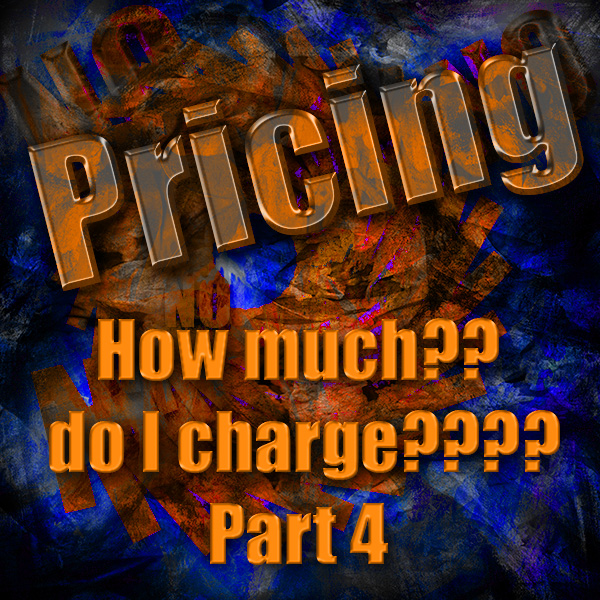
SEVEN: Albums
I know many photographers like albums. I am not a huge fan. You either have to take the time to do the layout or pay someone to do it (my choice). I know you can get big numbers from them but make sure you cover all your bases, including time, when deciding the pricing.
I prefer Album boxes. Make a few 5×7’s for peanuts, slide into 8×10 mats and put into the box. Pretty simple plus if you make an error in any image you just change out one print.
EIGHT: ALWAYS list most expensive product first
I’m firm on this one; this is pretty much an unbreakable rule. People read from the top down, left to right. Start out with that 40×60 for half a million bucks (you wish) and by the time they get down to that 16×20 for $800 it’s going to look pretty inexpensive. The mind works this way, at first they think ‘Oh my God, I can’t afford this’ to ‘Well, that’s more in my budget’. Start small to large and it’s an uphill battle.
It works the same way with your good/better/best pricing, always list the most expensive product first or right to left.
NINE: Session fees
OK, there’s a lot of wiggle room in this one. I know some VERY successful (Bradford) photographers who have no session fees. I know others who have very high session fees. Which is better for you?
Well, Bradford has a brilliant system where he has one background and I’d guess not much changing in the lighting. In my semi-retirement, I am doing everything from the consultation to the shoot to print delivery on location. That’s a significant chunk of time to be doing everything for free so I have a session fee of $300. That works for me, you may be different.
But there is another good reason to have that session fee. You don’t want to discount your products but the session fee can be used as a bargaining chip. You can do 50% off session fee promotions, free sessions for returning/good clients, etc. and not be hurting your sales average.
TEN: Payments
When we tally up the order we ask ‘How would you like to pay for that’. Most people either give you a check or a credit card and that’s the end of it. If they ask if they have to pay it all up front, we tell them they can pay 50% now, the balance when they pick up. 90% pay in full right off. I don’t offer payment plans, that’s what credit cards are for.
ELEVEN: Minimum orders
I’ve never had minimum orders. Why? I feel like they act as a barrier. Job one is to get people in front of your camera. People may not like the idea of having to spend a certain amount of money before even seeing the end result.
Have I ever been burned on this? Of course, but not that often. We are very comfortable with our photography and sales skills so we’ll put that risk on us.
TWELVE: Wall Groupings
You sell wall groupings by showing wall groupings. That is one of the big benefits of Proselect, Swift Galleries and others. Most can even let you show them on their own walls. If you go to the house during or before the shoot, you can take pics of the walls ahead of time. You can also ask them to do, some will, some won’t.
I price my wall groupings at a slight discount to buying the images individually. Why? I’d rather sell 3-5 images than just one. Most of the wall groupings I sell are Gallery Wraps.
Big tip: Use the templates from your lab. ACI has over 25 different templates and when you order them as a grouping the price is about 15% less than if you ordered them individually. Design your wall groupings ahead of time using these templates and you’ll be even more profitable.
THIRTEEN: Don’t use dollar signs or odd number pricing.
If you’re a low end studio, go ahead and price your work using dollar signs and odd number pricing. Example: 8×10 for $34.95. If you are trying to convey that you are a luxury product, use 20×24 for 1100. An Hermes bag is not priced at $4997, it is priced at 5000.
”
Steve Bedell has been a professional photographer for over 35 years. He has done weddings, portrait and commercial work but now restricts his business to portraits only.
Steve holds the Master of Photography and Photographic Craftsman degrees from the Professional Photographers of America and is a PPA Approved Print Juror.
commercial work but now restricts his business to portraits only.
Steve holds the Master of Photography and Photographic Craftsman degrees from the Professional Photographers of America and is a PPA Approved Print Juror.
He has been named the New Hampshire Photographer of the Year a record 8 times and in 2011 was awarded the New England Photographer of the Year title. His specialty is natural light portraiture.
He has written hundreds of articles for photo publications, taught classes and workshops nationwide and produced several lighting DVDs. His private newsletter, EPhoto, reaches over 2000 photographers. Steve was a regular contributor to Shutterbug magazine.
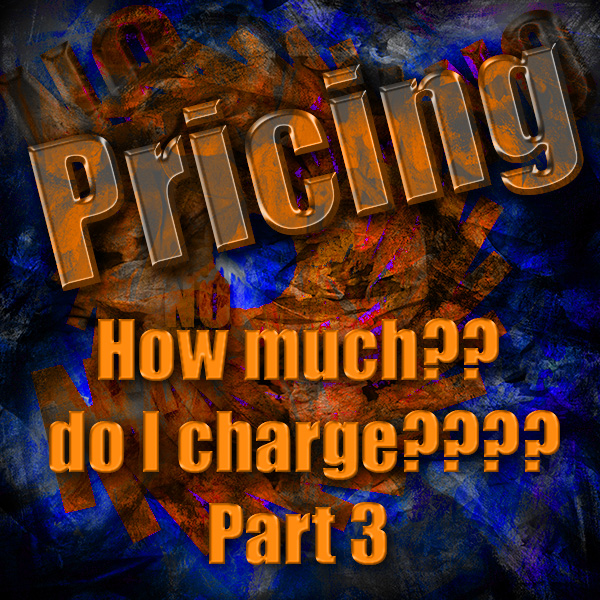
by successfulbob | Guest Post, Marketing Monday, photography, success education
Portrait Pricing Guidelines with Steve Bedell – Part Three
Steve Bedell shares his thoughts on Portrait Pricing.
“As I reviewed my part 1 and part 2 of this pricing topic here on Successful-Photographer I was astounded that having so much knowledge I wasn’t worth about 27 million dollars! In any case, there was great response to the article about pricing in general and how to determine where you should be in it so now we continue with specifics.
Please note that much of this is my opinion but a great deal of it is what I’ve learned by PSTM (people smarter than me) so I stray from these guidelines at your own risk. With that in mind, let’s get going. Again, my mind kinda wanders all over the place so things may not be in proper order, but put up with me, the info is the same.
 ONE: Should I have a printed price list?
OK, I’m not kidding here. I see in online groups people asking for all kinds of feedback on their price list. NOT the pricing, but how the price list looks. They’ll discuss fonts, layout, etc. They’ll look nice and pretty but does it really matter? We’ll come back to that but question two is related so let’s get to that right now.
ONE: Should I have a printed price list?
OK, I’m not kidding here. I see in online groups people asking for all kinds of feedback on their price list. NOT the pricing, but how the price list looks. They’ll discuss fonts, layout, etc. They’ll look nice and pretty but does it really matter? We’ll come back to that but question two is related so let’s get to that right now.
TWO: Should I post prices online?
This one is MUCH easier to answer: NO!
Why? Because if someone goes online looking for a photographer and does a Google search and they see your 8×10 (the standard that they all know) is $195 and Joe’sSuckyPhotos.com is $29, which one will they choose? They’ll most likely choose Joe because they are just looking at prices and when you compare pricing in a vacuum you are looking at a commodity. If they visit your site and instead see your special booklet that tells them ‘5 Tips for a Great Family Portrait’ and lots of testimonials you have already set yourself apart from the bottom feeders.
OK, so now that we have a little background, should you have a printed price list?
I say yes, so it doesn’t look like you’re just pulling prices out of the air. But do you need to print up hundreds and send/email them to everyone who contacts you?
No.
You only really need one, and that’s for you to use in the sales room. Don’t believe me? Bradford Rowley uses a SLIDE of the price list during the sales session and only leaves it there for as short as possible. You want people focused on picking the best pose and the proper size portrait, you do NOT want them sitting there with their nose in a price list.
A little caveat here. I am talking about a PRICE LIST, not a Product Guide. A product guide will show sample of the products and a starting price or price range. One of the best I’ve seen is by Megan Dipiero. We featured Megan a little while ago, you can see her guide HYPERLINK “http://files.megandipiero.com/product-guide/?page=1” \t “_blank” here.
THREE: When should I show the price list?
There are different schools of thought on this.
Some say don’t ever show it, just let them come to the order appointment, write up what they want, then tell them the price.
Others tell them pricing during the consultation when the session is booked.
I’ve used both methods, they both work. I prefer the up front method, it makes me and them more comfortable at the sales session, less like I’m holding the images hostage. Do what you’re comfortable with and what works for you. Previous to a consultation, always use a price range instead of exact pricing, like ‘Our gift prints start at $95 and wall collections begin at $1800’ or something along those lines. They’ll have a better idea of why you charge what you do during the consultation.
FOUR: Good/Better/Best pricing
This model has been around since the dinosaurs. Why? Because it works! I have my ‘paper prints at level 1, canvas prints at 2, and Gallery Wraps and metals at level 3. Decide size first, then finish. This gives you an opportunity to make more income on the same sized print. As an example, my 16×20’s are $600/$750/$925. This may seem very low to some and high to others. Also, don’t just call them finish one, two, three. Use names like The Masters, The Venetian, etc and include a descriptive paragraph like ‘enhanced by our artist and bonded to natural fiber canvas’.
FIVE: Should I have a contract?
I read many posts where photographers sound like wannabe lawyers. I like to concentrate on the experience so introducing a contract into the mix just doesn’t work for me. You should have policies for payment but in 40 years of doing this I’ve had no need for a contract. Weddings, yes, portraits, no. It’s up to you.”
More to come as Steve brings the rest of this home in Part 4 on Successful-Photographer.
Steve Bedell has been a professional photographer for over 35 years. He has done weddings, portrait and commercial work but now restricts his business to portraits only.
Steve holds the Master of Photography and Photographic Craftsman degrees from the Professional Photographers of America and is a PPA Approved Print Juror.
commercial work but now restricts his business to portraits only.
Steve holds the Master of Photography and Photographic Craftsman degrees from the Professional Photographers of America and is a PPA Approved Print Juror.
He has been named the New Hampshire Photographer of the Year a record 8 times and in 2011 was awarded the New England Photographer of the Year title. His specialty is natural light portraiture.
He has written hundreds of articles for photo publications, taught classes and workshops nationwide and produced several lighting DVDs. His private newsletter, EPhoto, reaches over 2000 photographers. Steve was a regular contributor to Shutterbug magazine.
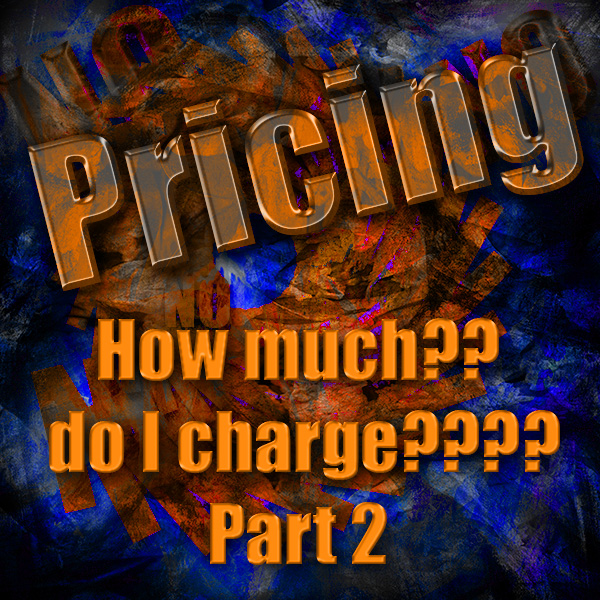
by successfulbob | Guest Post, Marketing Monday, photography
Portrait Pricing Guidelines – Part Two – Marketing Monday
with Steve Bedell
See Part One here
This article is from EPhoto Newsletter, a free bi-weekly newsletter for professional photographers. To subscribe for more great info contact Steve at smbedell@gmail.com.
Mistake number 4: NOT doing in person sales!
First, you have to remember I’ve been doing this since the mid 70’s. How else could we sell except for in person? I’m continually baffled by newbies who have been doing shoot-and-burn are afraid to do IPS.
To me, it makes no sense to do it any other way. If you want to make very little money from each session and not have your client get the beautiful products that they deserve with your professional guidance, post photos online. Then they can see all the photos, send links to every person they know, and not need to purchase a single thing. You just cut your knees off. Go do 10 more jobs for each one you could have done doing IPS.
IPS takes skill. There are many courses and ways available to you, go pick one; that is beyond the scope of this. It requires you to guide your client to choose the best images, discuss retouching, framing and artwork and also choose products that they will enjoy. This is critical if you want with income you deserve for your hard work and skill.

Mistake number 5: Retouching preview prints.
I see photographers online constantly bemoaning the fact that all they do is retouch and they live in front of the computer. Part of it is because they spend time ‘pre-touching’ prints because they don’t believe the client can visualize the final prints. Give them more credit and stop fixing 40 images when they may only buy 3-5. See how much time that saves you.
There may be some instances where the finished print is a composite or has things added for some reason but for routine portraits, you’re wasting a LOT of time.
Mistake number 6: Justifying your price
We’ve all seen the posts that go into great detail about how much it cost to be in business and produce prints. You have overhead, you have insurance, taxes, blah, blah, blah. And when photographers see these posts they all get on the bandwagon and love the post and use it to explain why their 8×10 cost $76.38.
Enough!
When you walk into a Mercedes showroom does the salesman there go through a laundry list of items like new factory they just built, how much health care is costing them, etc? Of course not! It’s a freakin’ Mercedes; you know it cost more because they have BRANDED their products.
Do you ask the jeweler why the Rolex cost more than the Timex? Of course not, they do not address the same market. So stop it!
OWN your pricing! Be proud of it instead of making lame attempts to justify it. Set yourself apart from the mass of bottom feeders who make a mockery of those who choose to excel in this wonderful business that is a mysterious combination of art and science.
I probably wandered off topic, got a little personal and didn’t tighten things up as much as I should have. Maybe I even turned this into a bit of a rant.
But that’s OK, I ain’t no stinkin’ journalism major, I’m a photographer who sees many struggling or moving down the wrong path and with all the help available out there, I’m a photographer who sees many struggling or moving down the wrong path and with all the help available out there, there is just no need for it!
I think it was Charles Lewis who once said ‘Only seek advice from those who are where you want to be.’ So stop asking your brother what he thinks of your pricing or asking your mother what she thinks of your packages. That also goes for asking the photographer who has been in the trenches for six months for their advice.
So just STOP IT. Learn from those who are where you want to be.
Next issue I’ll discuss how your price list should be laid out to get the sales you want. There are some pretty specific guidelines that help your bottom line tremendously.
Steve Bedell has been a professional photographer for over 35 years. He has done weddings, portrait and commercial work but now restricts his business to portraits only.
Steve holds the Master of Photography and Photographic Craftsman degrees from the Professional Photographers of America and is a PPA Approved Print Juror.
commercial work but now restricts his business to portraits only.
Steve holds the Master of Photography and Photographic Craftsman degrees from the Professional Photographers of America and is a PPA Approved Print Juror.
He has been named the New Hampshire Photographer of the Year a record 8 times and in 2011 was awarded the New England Photographer of the Year title. His specialty is natural light portraiture.
He has written hundreds of articles for photo publications, taught classes and workshops nationwide and produced several lighting DVDs. His private newsletter, EPhoto, reaches over 2000 photographers. Steve was a regular contributor to Shutterbug magazine.
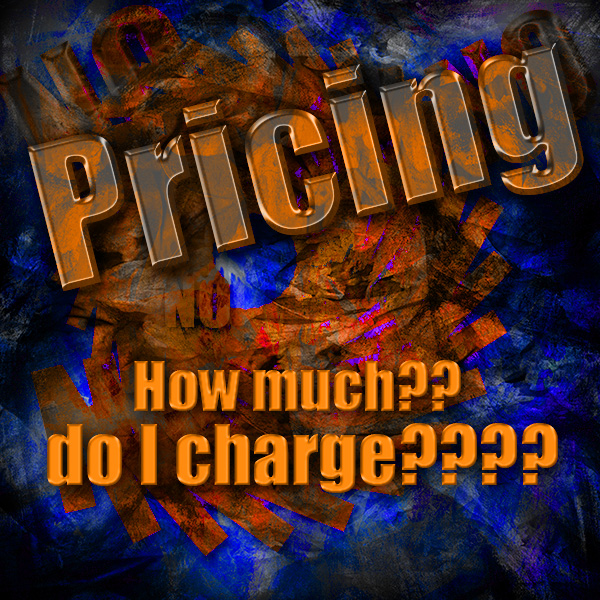
by successfulbob | Guest Post, Marketing Monday, photography
Portrait Pricing Guidelines – Marketing Monday
with Steve Bedell
This article is from EPhoto Newsletter, a free bi-weekly newsletter for professional photographers. To subscribe for more great info contact Steve at smbedell@gmail.com.
Pricing
If you’re like me, you belong to more than a couple of Facebook photography groups. At the end I’ll even list some that I feel are the most valuable.
Reading the posts in these groups is both an education and a frustration. The same questions posted over and over, and then 68 responses from people who may or may not be qualified, but they’re going to chime in anyway.
With that in mind, that brings us to part one: what should your prices be?
I find it hard to believe that people just go on these groups and ask prices like, ‘Hey, how much should I be charging for an 8×10?’ More surprisingly, people will answer something like ‘I charge $45’ or ‘I charge $195’. Wrong answer.
But perhaps my favorite is ‘First, you need to figure your Cost of Doing Business (CODB).’ It used to be that no one took the time to do a few tedious calculations to figure that out and while I can applaud the fact that more people are aware that you actually have to have some kind of idea of what your numbers need to be?
I find it hard to believe that people just go on these groups and ask prices like, ‘Hey, how much should I be charging for an 8×10?’ More surprisingly, people will answer something like ‘I charge $45’ or ‘I charge $195’. Wrong answer.
But perhaps my favorite is ‘First, you need to figure your Cost of Doing Business (CODB).’ It used to be that no one took the time to do a few tedious calculations to figure that out and while I can applaud the fact that more people are aware that you actually have to have some kind of idea of what your numbers need to be in order for you to generate the income you desire, that is NOT the FIRST question you should be asking yourself.

Mistake one: The first question should be ‘Where do I want to position myself in the market?’
You see, all that other stuff is fine but how can you set prices until you define your market and your brand. Do you want to sell unique 30×40 painted portraits for $20,000? Do you want to do school photos for $25 a unit? Do you want to sell prints or files or both? Are you seeing why it makes no sense to figure out COGS and CODB until you define your niche in the market?
You see, all that other stuff is fine but how can you set prices until you define your market and your brand. Do you want to sell unique 30×40 painted portraits for $20,000? Do you want to do school photos for $25 a unit? Do you want to sell prints or files or both? Are you seeing why it makes no sense to figure out COGS and CODB until you define your niche in the market?
With that taken care of, let’s go ahead and address some other pricing issues that make my head boil every time I see them.
Mistake number 2: Starting out at a low price to get business and raising it later.
Big mistake. Later won’t ever come unless you move to another city and start with new clients because you’ve already branded yourself at a certain price level. Work for FREE until you feel your work commands the price you want and then start charging. It’s far harder to dig out of a hole than to start out where you want to be. If you need to do another job or earn income some other way, do it.
Mistake number 3: Selling files, or selling files and prints.
OK, I expect some will disagree with me here but hear me out. I know MANY successful photographers who make a great living selling wall prints and other print products. While there are probably some, I don’t know any who make a great living selling files.
Here is the part I don’t understand. If we sell artwork, we can command a decent price for it. And we can sell many copies of it. I had a client a couple of years ago for an extended family portrait session. She bought $4500 worth of 5×7’s! And I ran into her at the beach one night while I was doing a family portrait and she was there with some family members in beach clothes and she asked if I could take photos of them when I was done with my family. I said sure. She ordered another $2200 worth of 5×7’s from those super casual beach photos!
That’s almost $7000 worth of 5×7’s from 2 files. Imagine if I sold that file for $300. I’d have $600 instead of $6700. How much more work would I have to do to sell files to make that amount? What if I gave them the file with each print they ordered, like some photographers do? I’d still be WAY under!
More from Steve next Monday!
Steve Bedell has been a professional photographer for over 35 years. He has done weddings, portrait and commercial work but now restricts his business to portraits only.
Steve holds the Master of Photography and Photographic Craftsman degrees from the Professional Photographers of America and is a PPA Approved Print Juror.
commercial work but now restricts his business to portraits only.
Steve holds the Master of Photography and Photographic Craftsman degrees from the Professional Photographers of America and is a PPA Approved Print Juror.
He has been named the New Hampshire Photographer of the Year a record 8 times and in 2011 was awarded the New England Photographer of the Year title. His specialty is natural light portraiture.
He has written hundreds of articles for photo publications, taught classes and workshops nationwide and produced several lighting DVDs. His private newsletter, EPhoto, reaches over 2000 photographers. Steve was a regular contributor to Shutterbug magazine.
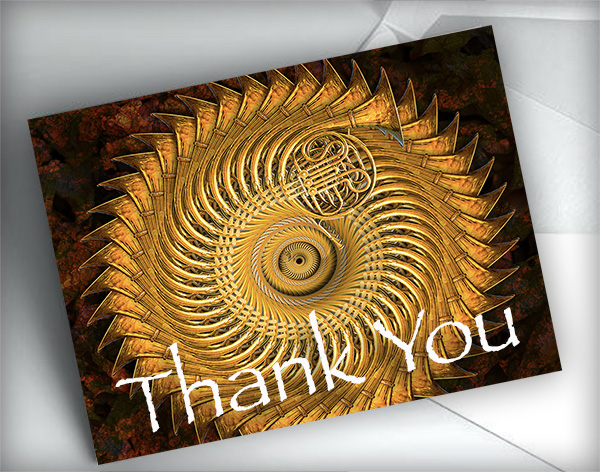
by successfulbob | Guest Post, Marketing Monday, photography education, photography marketing
The Power of a Handwritten Note
Marketing Monday with Skip Cohen
One of the easiest ways to separate yourself from the competition is also one of the most forgotten, a handwritten note. Most of us can barely write a check without making a mistake, simply because we’re so used to typing and texting everything we write.
Over the years I’ve sent hand-written notes and received some great ones. Each one has stood out in a different way and brought me closer to people, even some who I’ve known for many years. There are new friends and old ones, but receiving a handwritten note is such a nice touch to building a stronger network and relationship.
 Use one of your images on the face of the card. Could be the family or subject photographed.
Use one of your images on the face of the card. Could be the family or subject photographed.
(I put my contact info and logo on the back of the card) Graphic by Bob Coates Photography
Here are a few ingredients to make your notecards that much more effective
1) Use one of your own images on the front! NEVER use a store-bought card.
2) On the back of the card share your personal contact information. Centered at the bottom, it should look like the label on a Hallmark card, but your studio or name and contact information, including social media addresses and phone number.
3) Use a nice stock of paper. And, if you make it an odd size, it’ll stand out even more.
4) Take the time to write something personal in appreciation for whatever the person you’re sending it to, did to help you.
So, the next time somebody does something nice for you, or maybe it’s a vendor who takes a little extra time to help you at a convention, remember the power of a hand-written note. There’s little that can top this age-old method of communicating!
 Skip Cohen has been involved in the photographic industry his entire career and previously served as President of Rangefinder/WPPI and earlier, Hasselblad USA. He founded SkipCohenUniversity.com in 2013. Skip is a co-host for “Mind Your Own Business” and “Beyond Technique,” webcasts through Photofocus.com, writes for several publications including Shutter Magazine and is actively involved in several advisory boards for non-profit organizations.
Skip Cohen has been involved in the photographic industry his entire career and previously served as President of Rangefinder/WPPI and earlier, Hasselblad USA. He founded SkipCohenUniversity.com in 2013. Skip is a co-host for “Mind Your Own Business” and “Beyond Technique,” webcasts through Photofocus.com, writes for several publications including Shutter Magazine and is actively involved in several advisory boards for non-profit organizations.


 commercial work but now restricts his business to portraits only.
Steve holds the Master of Photography and Photographic Craftsman degrees from the Professional Photographers of America and is a PPA Approved Print Juror.
commercial work but now restricts his business to portraits only.
Steve holds the Master of Photography and Photographic Craftsman degrees from the Professional Photographers of America and is a PPA Approved Print Juror.













